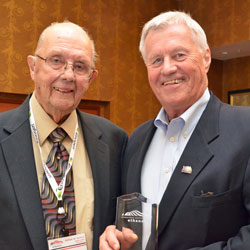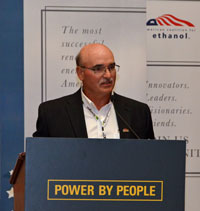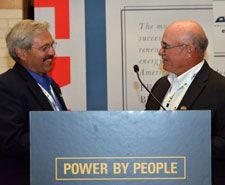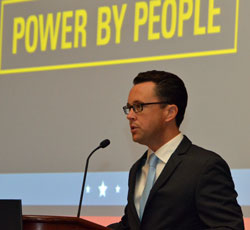Four ethanol producers who are innovating plants through new process and product technology took the podium at the American Coalition for Ethanol conference this week to talk about what they are doing.
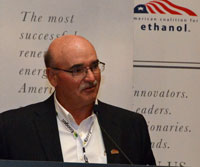 First up was ACE president Ron Alverson of Dakota Ethanol who talked about the importance of carbon, particularly the California Low Carbon Fuel Standard (LCFS) and how it impacts ethanol production. Alverson is a corn farmer in South Dakota and he discussed how carbon intensity ratings for corn ethanol are improving and will continue to improve down the road. Ron Alverson, Dakota Ethanol
First up was ACE president Ron Alverson of Dakota Ethanol who talked about the importance of carbon, particularly the California Low Carbon Fuel Standard (LCFS) and how it impacts ethanol production. Alverson is a corn farmer in South Dakota and he discussed how carbon intensity ratings for corn ethanol are improving and will continue to improve down the road. Ron Alverson, Dakota Ethanol
 Ray Baker, general manager of Adkins Energy in northwest Illinois, who talked about the new biodiesel plant they are building to co-locate with their 50 million gallon ethanol plant and use corn oil as a feedstock. “Having corn oil as your main feedstock gives you a competitive advantage,” he said.
Ray Baker, general manager of Adkins Energy in northwest Illinois, who talked about the new biodiesel plant they are building to co-locate with their 50 million gallon ethanol plant and use corn oil as a feedstock. “Having corn oil as your main feedstock gives you a competitive advantage,” he said.
Ray Baker, Adkins Energy
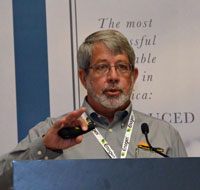 Mike Erhart, CEO of Prairie Horizon Agri Energy in Kansas, says he runs a biorefinery, not an ethanol plant. “I think ethanol plant is antiquated,” he said. “It’s now time that we become a biorefinery and start touting that.” Erhart also talked about why his plant is producing renewable diesel. Mike Erhart, Prairie Horizon Agri Energy
Mike Erhart, CEO of Prairie Horizon Agri Energy in Kansas, says he runs a biorefinery, not an ethanol plant. “I think ethanol plant is antiquated,” he said. “It’s now time that we become a biorefinery and start touting that.” Erhart also talked about why his plant is producing renewable diesel. Mike Erhart, Prairie Horizon Agri Energy
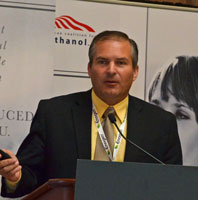 Delayne Johnson, Quad County Corn Processors, has the distinction of producing the very first gallons of cellulosic ethanol, just about a month ago. He talked about his plant being the first to use Syngenta Enogen corn and efficiencies they have implemented in the production process.
Delayne Johnson, Quad County Corn Processors, has the distinction of producing the very first gallons of cellulosic ethanol, just about a month ago. He talked about his plant being the first to use Syngenta Enogen corn and efficiencies they have implemented in the production process.
Delayne Johnson, Quad County Corn Processors







